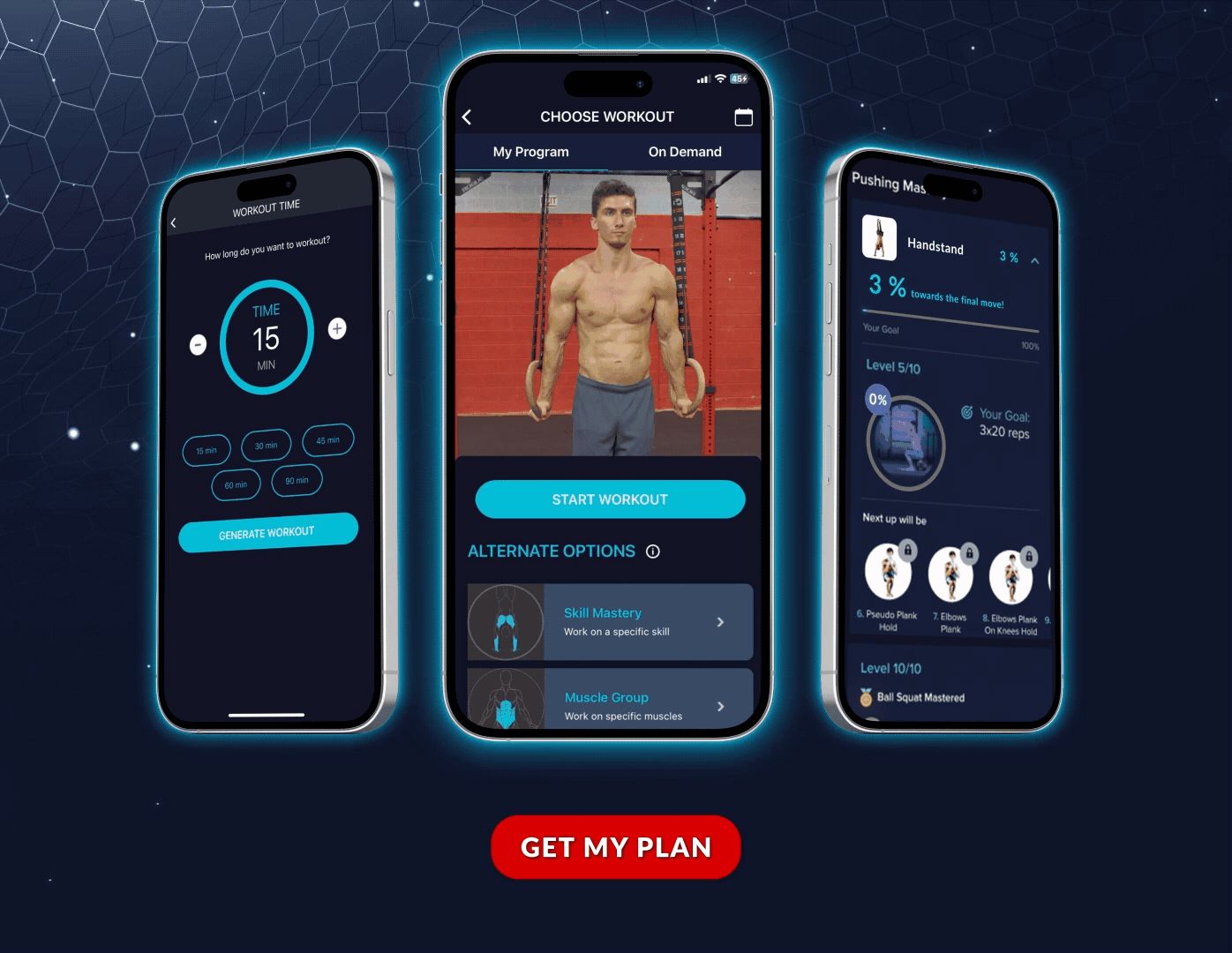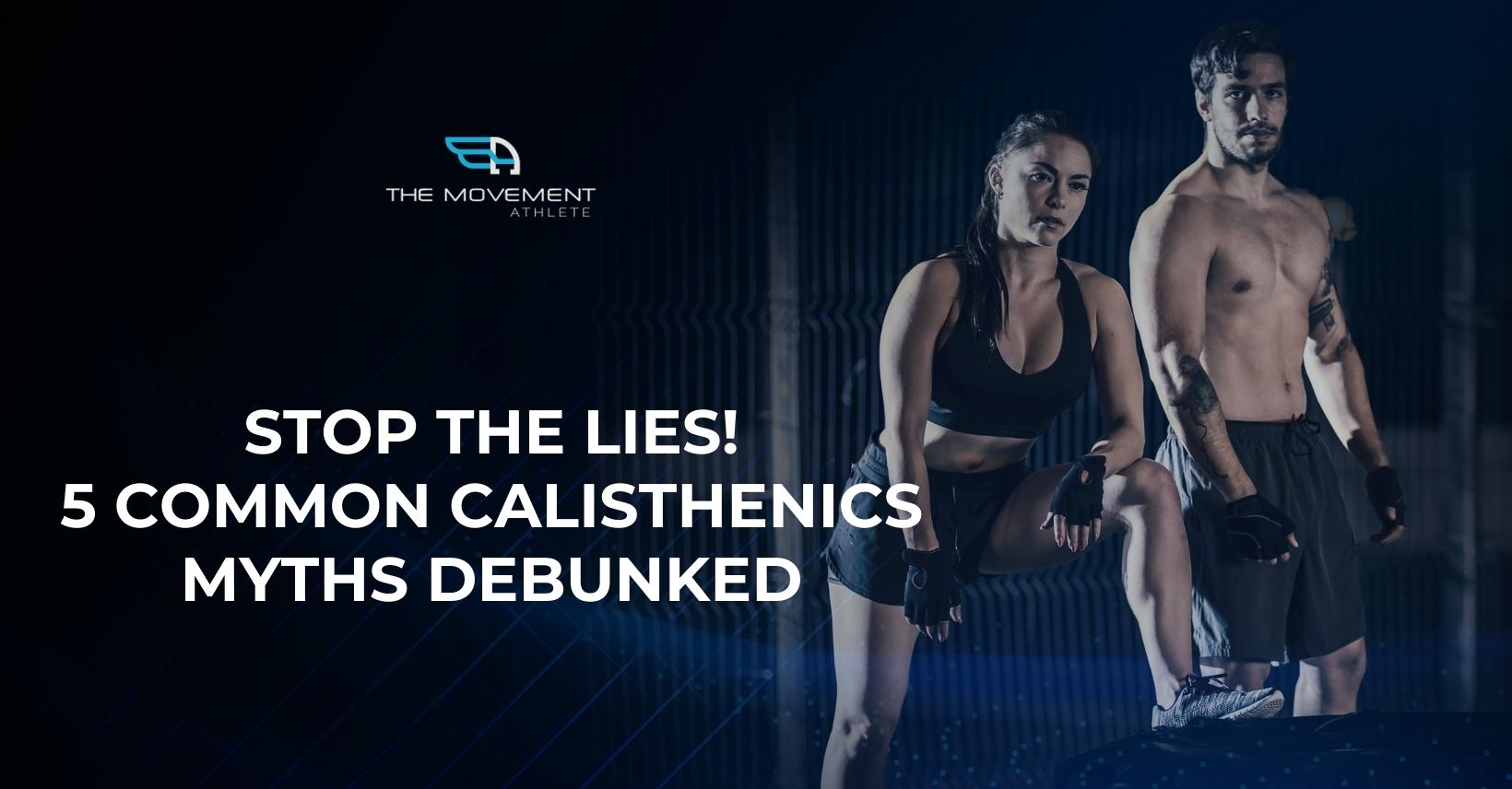

📖 Read Time: 8 Minutes
🏋️ Join the tribe of Movement & Calisthenics Athletes
People just like you that are working with their own body weight to get strength, lose fat, build muscle, recover from injuries and live their best lives!
There are a lot of calisthenics myths and common misconceptions out there. 😢
We get it, calisthenics is not for everyone and you might be skeptical about it. But we want to tell the truth about calisthenics so that you can make an educated decision on whether or not this type of workout regimen is right for your goals and lifestyle.
In this blog post, we will debunk 6 common calisthenics myths and present truths instead! 💪
👊 Myth 1: You can’t build muscle with calisthenics

✔️ Truth:
You’ve probably heard this the most. Many people steer away from calisthenics workouts because they think that bodyweight training can’t build muscle.
Usually, the misconception comes from the thought of calisthenics is not as effective as weightlifting for building muscles because it doesn’t provide enough resistance to create hypertrophy (muscle growth).
FALSE.
This myth couldn’t be further from the truth! 👆
Calisthenics is an amazing form of resistance training. Even calisthenics training can help you make huge gains in muscle size.
You might think that bodyweight exercises like pull-ups don’t work your muscles very hard, but this is only true if you do them incorrectly.
If done with proper form and at the right intensity according to skill level, they can definitely push your body beyond its limits – which means more muscle fibers recruited and a greater potential for growth! 🚀
Plus, there are so many different variations you can do in your workout to stimulate muscle recruitment.
Just check out these calisthenics athletes and you’ll immediately see an amazing muscular physique:
• Daniel Vadnal of FitnessFAQs
• Frank Medrano
• Simon Ata of Simonsterstrength
• Hannibal the King
📌 The secret to building muscle is three things:
• Progressive overload with your training
• Proper nutrition through whole foods
• Good recovery habits
Read more: 📍 How to build muscle with calisthenics – Ultimate guide
Limitation: Calisthenics cannot help you build a bodybuilder physique
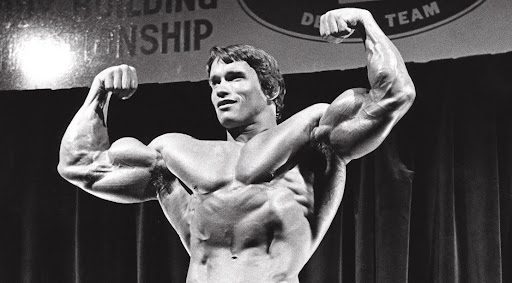
Arnold Schwarzenegger in his prime bodybuilding years.
If your aim is to have an amazing physique that’s lean and muscular following a more natural physique, then calisthenics is an amazing option. You can focus on muscle gain and fat loss at the same time thanks to body recomposition. You can get an amazing physique and bring your fitness level to another level even without cardio.
If you want to have a big and bulk bodybuilder’s physique, it’s not that possible with calisthenics since it lacks the number of isolation exercises to target muscle groups and hit them per workout very hard.
🔎 Calisthenics focuses on compound movements. Although some calisthenics “isolation” exercises exist, these movements aren’t true isolation. This means that you will fatigue earlier before you can completely break down the muscle compared to using weights.
Calisthenics can help you in gaining muscle mass. You can get big but not massive.
If you want to be really big, a weighted workout is your option.
👊 Myth 2: Only beginners will benefit from bodyweight exercises
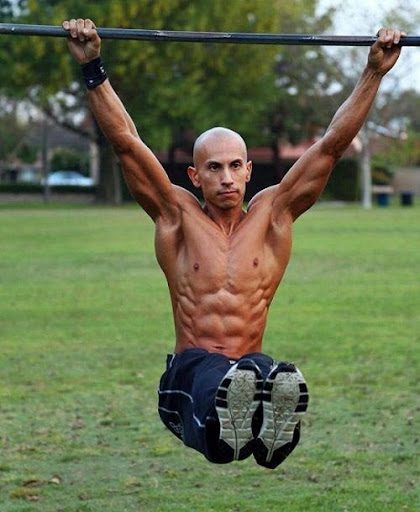
Calisthenics athlete Frank Medrano, at the age of 63, still using advanced calisthenics.
✔️ Truth:
There are two cases for this concern.
Some people think calisthenics is too easy because they can “DO” the basic exercises such as a push-up but not realizing their techniques sucks. When they correct their form, they will find it challenging enough. 💪
Other advanced individuals just know the basic forms of bodyweight exercises.
As mentioned in myth one, there are many variables you can play with to increase the intensity of any calisthenics exercises.
With weightlifting, progression is more straightforward since you only have to add weights. With calisthenics, we manipulate our body positions to change the leverage of an exercise.
We can make any exercise harder or easier depending on our goals. 🎯
To get a better idea of ways to progress, check out the article below:
📍 8 Methods of Progressing in Calisthenics
Limitation: Calisthenics cannot help you with all goals
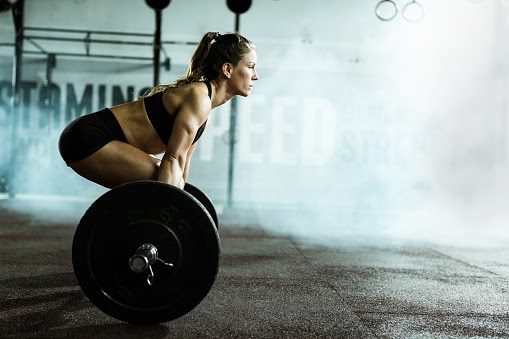
Do you want to get stronger in power lifting? Train it specifically!
🏆 Calisthenics workouts are great for losing weight, muscle building, strength development, mobility, skill work; basically body mastery.
While it covers a lot of fitness goals, it still doesn’t cover every goal you like to achieve.
For example, as mentioned earlier, if you want to build a physique like a massive bodybuilder, it’s not that possible.
Another example is if you want to master martial arts. Yes, calisthenics can help in some elements such as conditioning and strengthening but only to an extent.
Specific goals require specific training. 💪
👊 Myth 3: Calisthenics can’t get you really strong
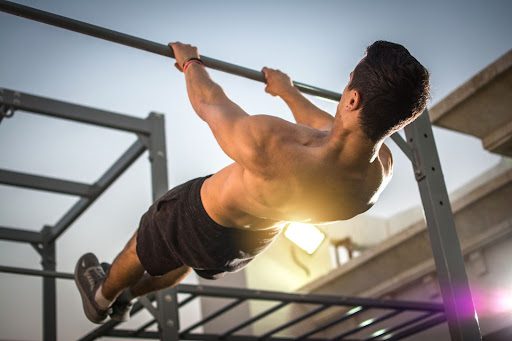
Does that look “NOT STRONG” to you?
✔️ Truth:
Have you seen a front lever?
Tell me that isn’t a sign of strength! 💪
Advanced moves are developed through rigorous calisthenics strength training. These skills such as the planche, levers, and handstand push-ups require specific strength that can only be attained over a longer period of dedication.
Aside from advanced strength-based skill work, advanced progressions of the basics such as ring dips, and one-arm pull-ups also require an insane amount of strength.
🧐 This is why progressions exist.
Limitation:
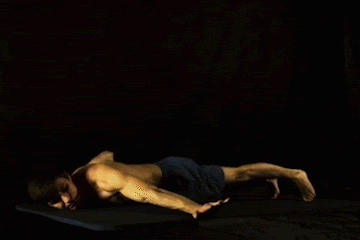
Bodyweight exercises use only, obviously, our body weight. This means that no matter how much we put ourselves in a mechanically disadvantageous position, our strength gain is limited.
Bodyweight training develops our RELATIVE STRENGTH depending on our body weight (muscle mass + fats + all the other things in our body). It’s highly affected by our weight so when we gain more muscle mass, we gain more strength. 💯
Weight lifting develops ABSOLUTE STRENGTH which is the overall strength level regardless of body weight.
📌 Relative strength can still produce a good amount of absolute strength, but if we want to get stronger, we need to train with more resistance. Training with weights will be the best option.
Then again, you can implement weight training in your bodyweight workout OR you can use weighted variations of calisthenics exercises.
Choose the training methods that work for your goals and that you enjoy.
👊 Myth 4: Calisthenics do not need rest days
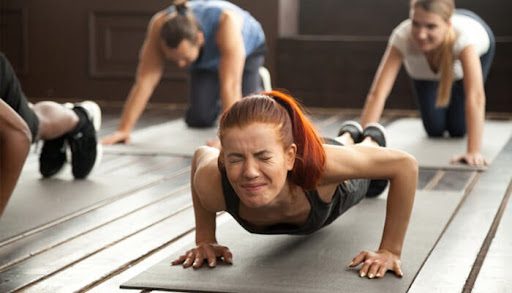
If you need some rest, go get some rest. 120% effort is not always feasible.
✔️ Truth:
We really can’t approach this black and white.
While we can train every day with calisthenics, the intensity, training duration, frequency, and programming (split, skill work, full-body) should all be considered.
If you will work on advanced movements and harder workouts, rest days are a must, at least once a week of a FULL rest day. With the same intense workouts, you also need to split the muscle group training so that each muscle group can rest AT LEAST 24 – 48 hrs.
For full-body training, you have no choice but to include rest days in your routine.
Limitation:
A rest day can be a full rest day where you will just let your body rest without any training OR add a form of active rest day where you can train with very low-impact exercises such as walking or light mobility work.
This might be the reason where the misconception stems from… Or people just really think calisthenics is easy.
👊 Myth 5: Calisthenics is only for short and light people
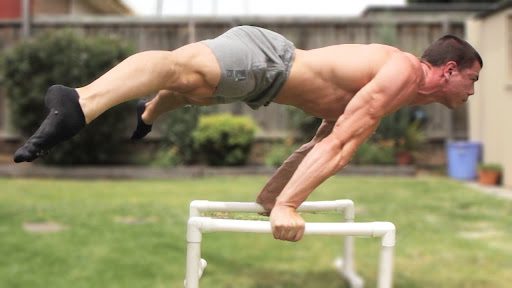
Big man Daniel Vadnal of FitnessFAQs standing at 6ft tall with an impeccable straddle planche form.
✔️ Truth:
Every human body is different, but our difference has nothing to do with what you can accomplish with calisthenics.
Big and tall people can opt for bodyweight training to build muscle, lose weight, and achieve other goals calisthenics can provide.
They can still also perform calisthenics at a high level and train with calisthenics.
Beginners who are bigger and new to this physical activity can definitely lose fat, maximize muscle development, and burn calories with calisthenics. They really just need proper guidance for maximum progress.
Not sure where to start? Take our free assessment for a personalized plan based on your goals and fitness level.
Limitation:
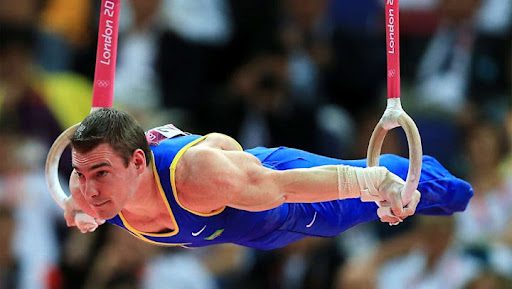
High-level gymnast Arthur Zanetti at 5ft 1in tall.
Due to longer limbs and torso, it might be more difficult for bigger and taller individuals to progress with a higher level in advanced skills such as planches, or levers.
The longer lever will put taller people in a more mechanically disadvantaged position.
At the same time, heavier people will find it more challenging to manipulate the body for adaptation.
That’s why elite-level ring-specialist gymnasts generally weigh less and are shorter.
HOWEVER, they can take this as a challenge and prove to everyone that CALISTHENICS IS FOR EVERYONE.
👊 Myth 6: Calisthenics can’t build legs
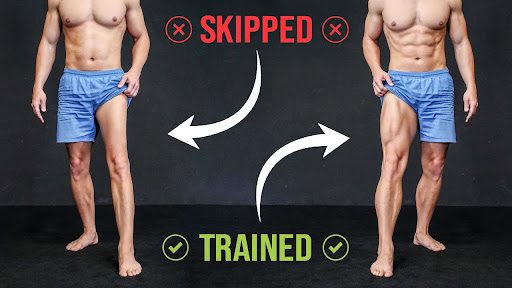
CaliMove show what calisthenics legs could look like if you train them.
✔️ Truth:
One of the most common misconceptions out there that plagued the world.
Most people associate a calisthenics athlete with a high level of upper body strength and muscle with the dreaded chicken legs.
There’s a reason for this. SOME calisthenics athletes focus on advanced level skills which are why their lower body tends to lag, BUT NOT ALL CALISTHENICS ATHLETE ARE LIKE THIS.
🏆 You can definitely build POWERFUL, MOBILE, and MUSCULAR LEGS with calisthenics.
Thanks to exercises like pistol squat, nordic curls, reverse nordic curls, calf raises, not only can you increase strength and size, you can also improve the range of motion your legs can do for a better quality of movement.
To build muscle on your legs using bodyweight, you might just need to structure your program a bit differently compared to upper body training.
Adding intensity is limited in lower body calisthenics. As you move to the next progression, strength and muscle elements are added but so are other elements such as balance, mobility, and stability.
For this reason, more reps are needed for muscle gain. This means that you’ll need to spend a bit more time in your leg days, BUT at least you can do it even in the comforts of your house.
Ready to build strong legs? Check out our complete leg training guide for detailed progressions and workouts.
Limitation:
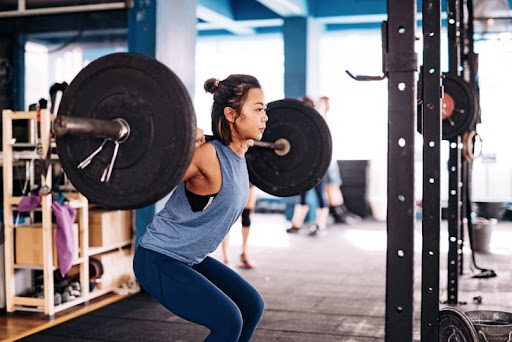
It is possible to build muscle with calisthenics for the lower body, BUT we cannot deny the absolute benefits of training with weights for your legs.
If you want to train for absolute strength and muscle mass, weight training offers a very straightforward and effective approach to leg training. Weighted squats also offer easier strength gains as you can directly train without factoring in other elements such as balance and mobility.
Unlike when training for pistol squats, you would need a higher degree of overall body control in order to even execute one rep of the movement properly.
💡 Key Takeaway: Calisthenics is a fantastic approach to improving your fitness and reaching body mastery. While there are limitations to what it can accomplish, the myths surrounding calisthenics often overshadow its true potential for building strength, muscle, and overall fitness.
✊ Conclusion:
There is a lot of information regarding this approach but there is also a ton of misinformation surrounding calisthenics.
This is why we need to approach each piece of information objectively. Study the information, find evidence, and gauge if it is truly true.
We should absorb every piece of information, and filter it out. Use only what is true and supported by science, and throw away the claims that might hinder your growth.
If you find it a hassle to filter out the vast knowledge, get a proper workout plan from REAL calisthenics experts.
Start your journey with our School of Strength email course for weekly training tips and guidance from calisthenics experts.
Related Articles You’ll Love:
Ready to get started?
Get your free personalized training plan now
